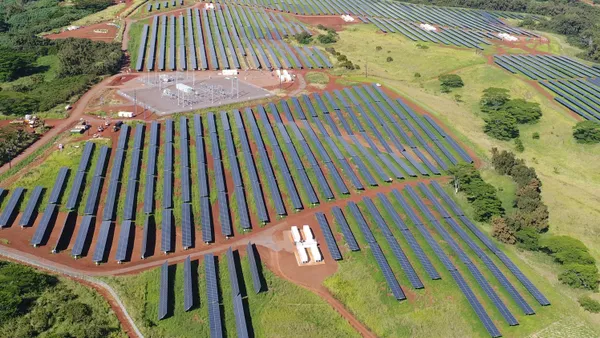Dive Brief:
- The California Independent System Operator got through a record-setting heat wave in September without resorting to rolling outages — a “remarkable outcome” — in part because of 3.5 GW of storage that was added since mid-2020, the grid operator said in a report Wednesday.
- Also, consumers cut their electric use by about 1,510 MW in response to calls for conservation and other efforts on Sept. 6 when the CAISO grid hit a record peak load of 52,061 MW, according to the report.
- “As we continue to integrate new resources onto the grid and make other necessary adjustments, our experience and lessons learned during the September 2022 heat wave will help us navigate the next climate-driven challenge,” CAISO said.
Dive Insight:
Utilities and grid operators across the United States are increasingly challenged by extreme weather, such as heat waves.
Starting Aug. 1, the West endured a 10-day heat wave, setting records across the region. Downtown Sacramento hit a record 116 degrees Fahrenheit on Sept. 6, according to the report.
CAISO’s market systems and processes largely responded as designed, according to the grid operator. “Because of greater regional coordination, reciprocity, and cooperation within the market, significant amounts of imported energy were available during the most stressed grid conditions,” CAISO said.
CAISO was also able to import power from the Desert Southwest and Pacific Northwest where the heat wave wasn’t as intense or long compared to California, according to the report. Net imports totaled 6,300 MW on Sept. 6. There were also 1,000 MW of transfers via the Western Energy Imbalance Market, according to the report.
“Despite the stressed system conditions during the heat wave, the market honored all wheeling-through market transactions that enable electricity to flow through the ISO but do not serve ISO load,” the grid operator said.
Recent market enhancements helped CAISO avoid rolling outages, according to the report. They include clarification of scheduling priorities, enhancements to resource sufficiency evaluations and electricity market pricing designed to incentivize generation when demand is high, the grid operator said.
During the heat wave, 60 storage resources with more than 4,000 MW of storage capacity and 15,000 MWh capability participated in the ISO markets, according to the report.
However, because of a software issue that has since been fixed, storage resources were not charging sufficiently early in the day during the heat wave, CAISO said.
“We continue to learn how best to integrate storage into the market, and the high prices experienced during the heat wave presented new scenarios for the ISO to learn about the complexities and challenges of managing battery state of charge,” the grid operator said.
In addition, the owners of fossil-fueled power plants have worked to improve the performance of their fleets in the last two years, CAISO said.
“These resources were critical during the most stressed part of the heat wave; however, some of these resources still experienced high levels of unavailability during other times of the event,” the grid operator said.
During the heat wave, the ISO’s daily average power prices rose to $600/MWh, with maximum prices reaching $2,000/MWh in the real-time market, the grid operator said.
CAISO plans to hold a conference call on Nov. 17 to review the report and answer stakeholder questions.















